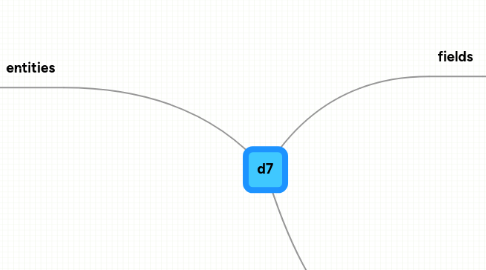
1. entities
1.1. are a sort of metaobject
1.2. a high level object
1.3. can be fieldable (erceive fields)
1.4. can support revisions
1.5. can have several bundles (sub types)
1.5.1. for nodes, a bundle is "node type"
1.5.2. node types are bundles and the bundles of the comment entity are the bundles of the parent node
1.5.3. a bundle is a kind of sub entity type so for nodes, its the node type
1.5.4. fields are pair bundle they can be in several bundles for an given entity type
1.5.5. so we need to identify the bundle for that particular comment
1.5.6. for comments, the bundle is actually the node type of the parent node
1.5.7. so you can have a different set of fields to comments attached to a given node type
1.6. can have an uri
1.7. can have build modes
1.8. hook_entity api
1.8.1. hook_entity_info + _alter
1.8.1.1. DrupalEntityControlerInterface
1.8.2. hok_entity_(load|insert|update) but no delete
1.8.3. entity_load _load_multiple but no _save or _delete
1.8.4. http://drupal.org/project/entities
1.8.4.1. implement missing hooks likes save or delete
2. fields
2.1. schema
2.1.1. a way to store your fields
2.1.2. what are the columns you need for the field
2.1.3. simple fields only have on column wich is the value of the field
2.1.4. complex fields can have several columns
2.1.5. for example, you can describe a url field
2.1.6. that has both a url, a title, an alternative value etc..., those are the columns of the field
2.2. widget
2.2.1. the way to edit the fields
2.2.2. the modules implementing a field will define widgets
2.2.3. basically a form api snipets that define the front end elements that allow you to edit the field
2.2.4. for the example of the url field, you will have 3 separate textfields
2.3. formatter
2.3.1. is the way you display the field when you are not editing it
2.4. settings
2.4.1. global
2.4.1.1. affects everyway the field is used
2.4.2. persistance
2.4.2.1. different settings in a given context
2.4.3. if you are sharing a field on different node types, you can choose the parameters of theses difeerent instances so you can have different settings
2.5. hooks
2.5.1. hook_field_info + _alter
2.5.1.1. way to design (expose) new field types
2.5.2. hook_field_schema
2.5.2.1. define the schema of the field
2.5.3. hook_formater_info + _alter
2.6. you can have several widgets and formatter for a given field
3. entity
3.1. bundle
3.1.1. field instance
3.1.1.1. field
